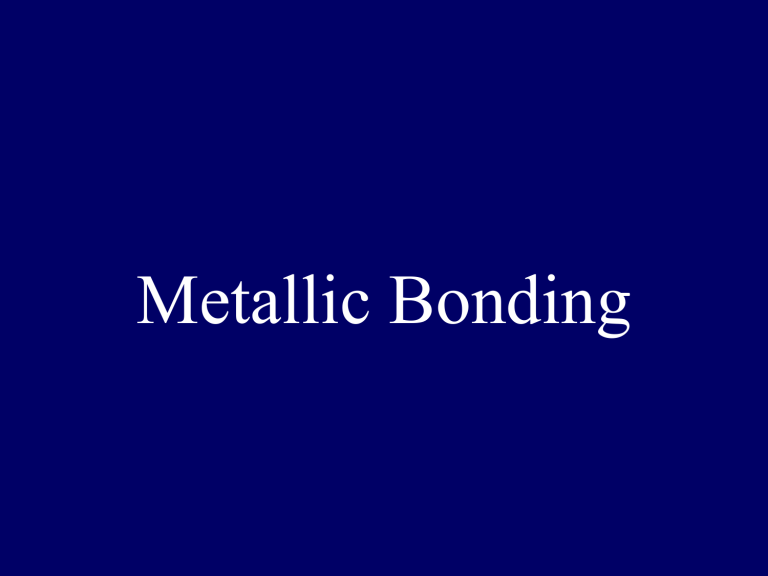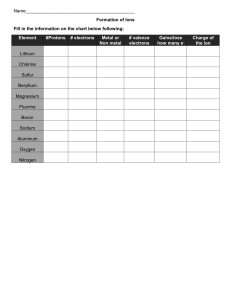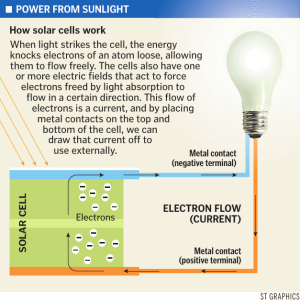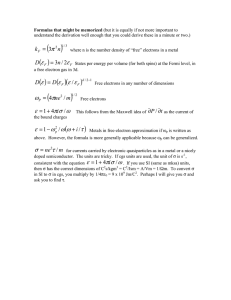
Metallic Bonding Type of Structure “Electron Sea” • Charged particles that are free to move and conduct electricity • Strong forces of attraction between atoms throughout the metal structure Metallic Lustre Because of the reflection of light by the mobile electrons https://www.youtube.com/watch?v=inrFPE HXzjs C. Johannesson Metals are Hard and Dense Metals are usually hard and tend to have high melting and boiling points Strong electrostatic forces of attraction between positive metal ions and the sea of delocalised electrons holds the metallic lattice together Good conductors of Electricity When a metal is connected to electricity, one end of the metal becomes positive and the other becomes negative. Since the electrons are free to move, they result in an electric current https://www.youtube.com/watch?v=DbKE CtWNm8k C. Johannesson Conduction of Heat Electrons are able to gain kinetic energy in hotter areas of the metal and are able to quickly transfer it to other parts of the metal lattice because of their freedom of movement. Heat causes the electrons to move faster and the ‘bumping’ of these electrons with each other and the protons transfers the heat. Malleable and Ductile Malleable: Can be beaten in to thin sheets without breaking. Ductile: Can be drawn in to a wire The attractive forces between the particles is stronger than the repulsive forces https://www.youtube.com/watch?v=vOuFTuvf4qk


